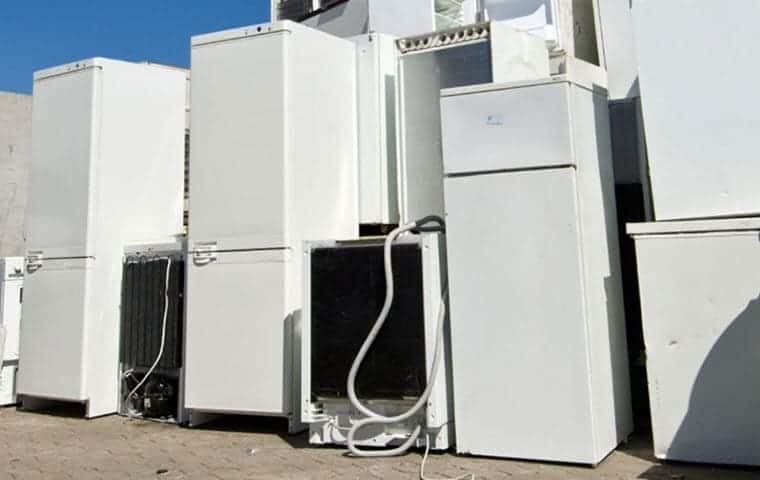Fridge Disposal

Service Overview
Have you just purchased a new fridge and you would like to dispose of the old one? If your answer is yes, then you know that disposing an old refrigerator isn’t an easy task.
If you opt to do the job on your own, then it’ll take you the entire day to finish it. The fantastic thing is that you could get someone to do it for you at a remarkably low price! We save you the trouble and our experienced team has all of the essential equipment dispose of your fridge quickly and correctly.
The advantage of using Junk Removals Group is that our response times are typically much faster than the council, we can collect from within the property and obviously, we do all the manhandling for you. We charge £36 (£30+VAT) to remove a domestic fridge as part of a larger collection, or £60 (£50+VAT) if we are taking just the fridge.
Beware of anyone charging less than this because the actual costs to waste contractors of disposing of fridges are relatively high, so lower prices probably indicate improper disposal. In any event, to fulfil your Duty of Care remember to check they are properly licensed with the Environment Agency and to ask for a Waste Transfer Note detailing your collection and specifying the waste removed was a fridge.
POPULAR QUESTIONS
Yes you can take them to your local household waste recycling centre, or check to see if your council offers a household recycling collection for bulky electricals. Or you could save the time and energy and get us to do it.
There are a number of ways you can dispose of your old fridge. Below are a few examples:
- Ask your appliance retailer to pick up your old fridge.
- Recycle your old fridge.
- Donate your fridge to charity.
- Use a Junk Removals Group to pick up and dispose of your fridge.
Unless your refrigerator is passed for reuse and assuming you use one of those responsible disposal routes outlined above, your refrigerator is going to wind up being moved to a dedicated refrigeration recycling plant.
Regardless of the damaging substances used in manufacturing, over 95 percent of a normal refrigeration unit is recyclable, whether it comprises CFCs/HCFCs or not. Fridges are deconstructed inside a sealed environment so that any Ozone Depleting Substances can be safely eliminated.
The rest of the substances are separated mechanically into individual product flows including plastics, ferrous and non-ferrous metals and foam to be recycled or reused. Here’s a more detailed overview of what happens:
- The compressor is separated from the refrigerator, gases and oils are removed under vacuum, and CFC gases are removed from the oil using ultrasonics — a few compressors could be reused after this Procedure
- The fridges are shredded in an enclosed nitrogen atmosphere and CFC gases within the insulating foam are discharged.
- The shredded contents are dried and the CFCs and nitrogen are captured and carried off for separating.
- Insulating foam powder is separated by a sieve and can be collected for disposal.
- Ferrous metal is separated by an overhead magnet and non-ferrous metal is separated from the plastics for recycling.
- CFCs are separated from the nitrogen by cooling to –160 centigrade when the CFCs liquefy and may then be destroyed by high-temperature incineration

